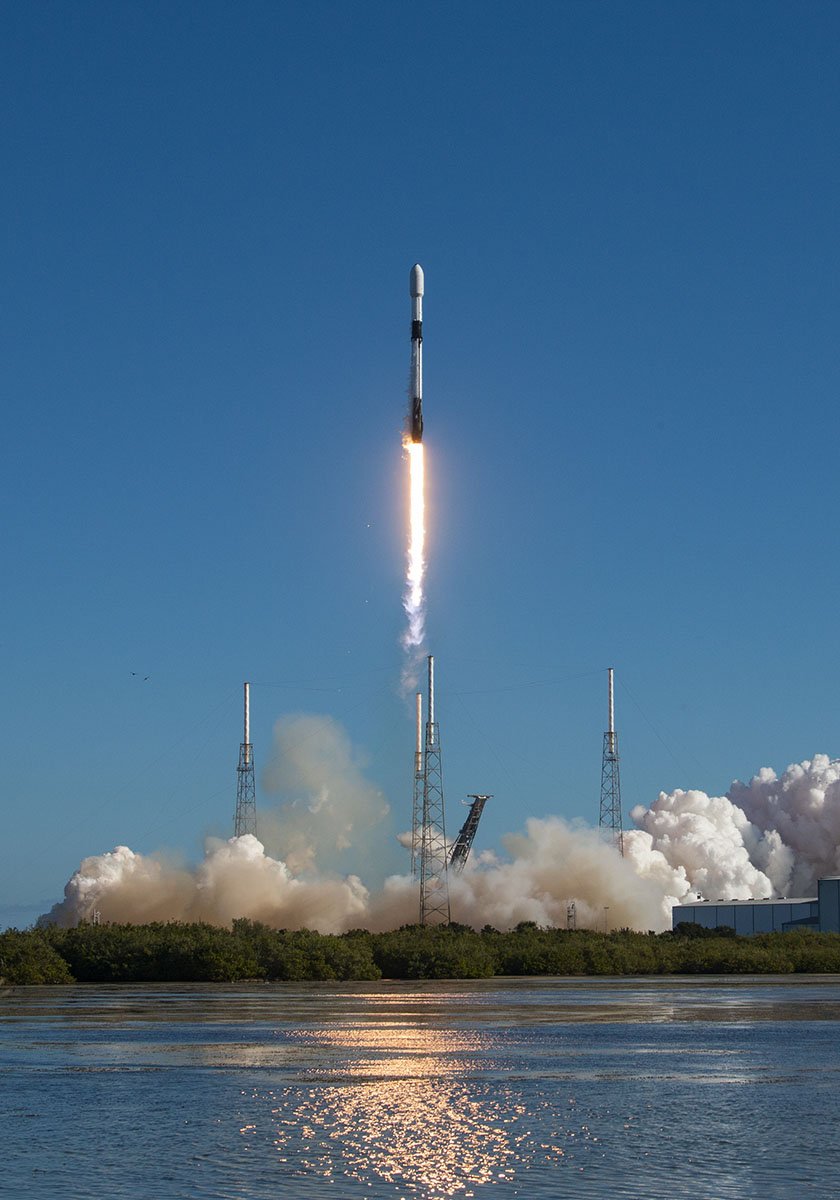Liftoff: Skykraft launches satellites into space
Skykraft’s Block II satellites launched on SpaceX from Cape Canaveral on 3 January
Skykraft’s Block II satellites have successfully reached low Earth orbit after being launched by SpaceX from Cape Canaveral on 3 January - and they’re operational.
As earlier reported in an interview with CEO Dr Michael Frater, Skykraft is a Canberra-based space-services company that builds satellites in Canberra. Not only that, but this launch means Skykraft’s approximately 300kg payload weighs more than the total mass of all Australian-born objects ever launched.
Skykraft was established in 2017 as a UNSW Canberra spin-off. It employs 30 people. Its manufacturing facility opened in March 2022, and it makes its satellites in Canberra -just minute’s walk to the CBD.
Liftoff
If you were at the beach, asleep or recovering from New Year’s Eve you might have missed it - but the Skykraft team certainly didn’t. In a historic move for Canberra’s emerging space industry, Skykraft’s five satellites lifted off from the Cape Canaveral Space Force Station on 4 January at 1.56am Canberra time.
But if you missed this launch event, don’t worry because there will be others; the launch will be the first of over 200 Skykraft satellites to orbit the Earth over the next two years with Skykraft’s satellite manufacturing facility and team of engineers aiming to produce 40 to 50 satellites per year to maintain the satellite constellation.
The five satellites are the size of a large suitcase when launched. But they opened up to the size of a small car when the antennas and solar panels were deployed.
All five satellites were launched as a single payload, with four mission satellites carried by an orbital transfer vehicle. The four mission satellites were then successfully separated from the orbital transfer vehicle to become five single satellites.
Making global air travel less bumpy
We are living in a globalised world where air travel is increasingly the norm. This is especially the case in Australia, with our large land mass and small population making air travel the preferred vehicle for many. Unsurprisingly, the Sydney-Melbourne route is the fifth busiest route in the world. With our love of air travel, Australia also has a long history of best practice in aviation safety. And that’s about to improve thanks to Skykraft.
“If you’re flying from Sydney to Los Angeles and your aircraft hits turbulence, the pilot will now be able to get a clearance to change altitude much more quickly.”
Skyraft’s satellites are part of its global Air Traffic Management (ATM) service. Essentially, the satellites will help track aircraft and address gaps in surveillance and communications over remote areas - including the Pacific. Currently, ground-based infrastructure can only accurately track aircraft 400km from land. Skykraft’s service will enable air traffic controllers to see aircraft at all times and talk directly with the pilot - anywhere in the world.
“We rely on air traffic control to avoid mid-air collisions, even in the middle of the Pacific Ocean,” said CEO Dr Michael Frater. "So if you’re flying from Sydney to Los Angeles and your aircraft hits turbulence, the pilot will now be able to get a clearance to change altitude much more quickly. For passengers, this means they won’t need to be seated for longer periods, and for airlines, savings on fuel and a reduction in the environmental impact.”
Airservices Australia is supporting ATM’s proof-of-concept through a collaboration agreement. “Airservices Australia is proud to be a partner of Skykraft, and congratulates them on the launch, which marks a significant milestone for an Australian company in advancing a sovereign space technology in this critical safety sector,” said Airservices Australia CEO Jason Harfield.
Skykraft is also working closely with partners in the Pacific.
Testing operational capacity
Now that the first satellite has launched - and is working - the next stage will be to conduct testing to ensure that the system works. Skykraft Chairman AVM (Retd) Mark Skidmore said that the operational capability testing will occur over the next three months. Commercial operations would then commence in 2025 when air navigation service providers take up the service.
“We are taking giant leaps forward into a whole new era in space and creating a global industry from our nation’s capital,.”
“We are taking giant leaps forward into a whole new era in space and creating a global industry from our nation’s capital,” said Skidmore. “We are creating a capable and robust space economy, starting with the design and manufacture of satellites, allowing young aerospace engineers to run space missions, making a career in the space industry a reality in Australia.”
The good news is that so far, everything is proceeding as planned.
“Skykraft is now actively operating the five satellites, which form the largest-ever constellation of Australian-built spacecraft.”
'“All onboard systems tested on the five satellites are performing in line with expectations, including the mission computer, which is operating flawlessly,” said Frater. “Skykraft is now actively operating the five satellites, which form the largest ever constellation of Australian-built spacecraft.”
Best wishes to Skykraft for its operational testing and for the manufacture and deployment of future satellites


